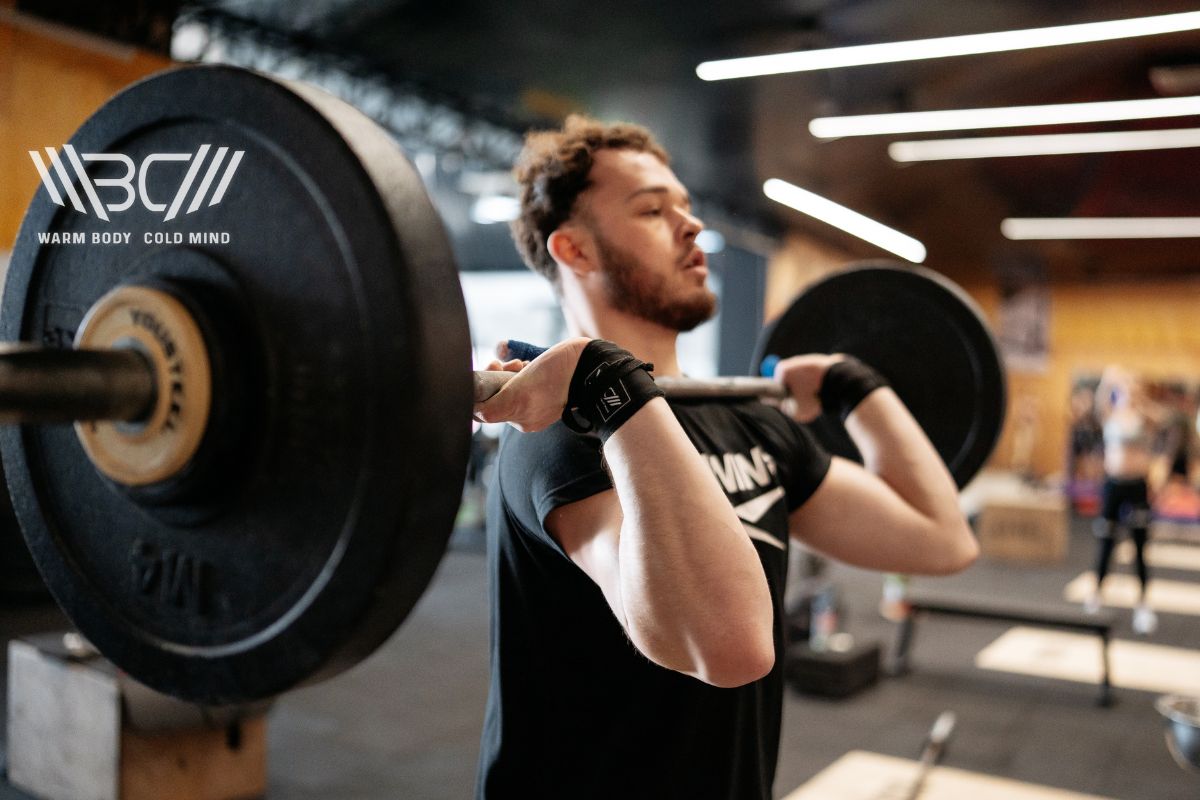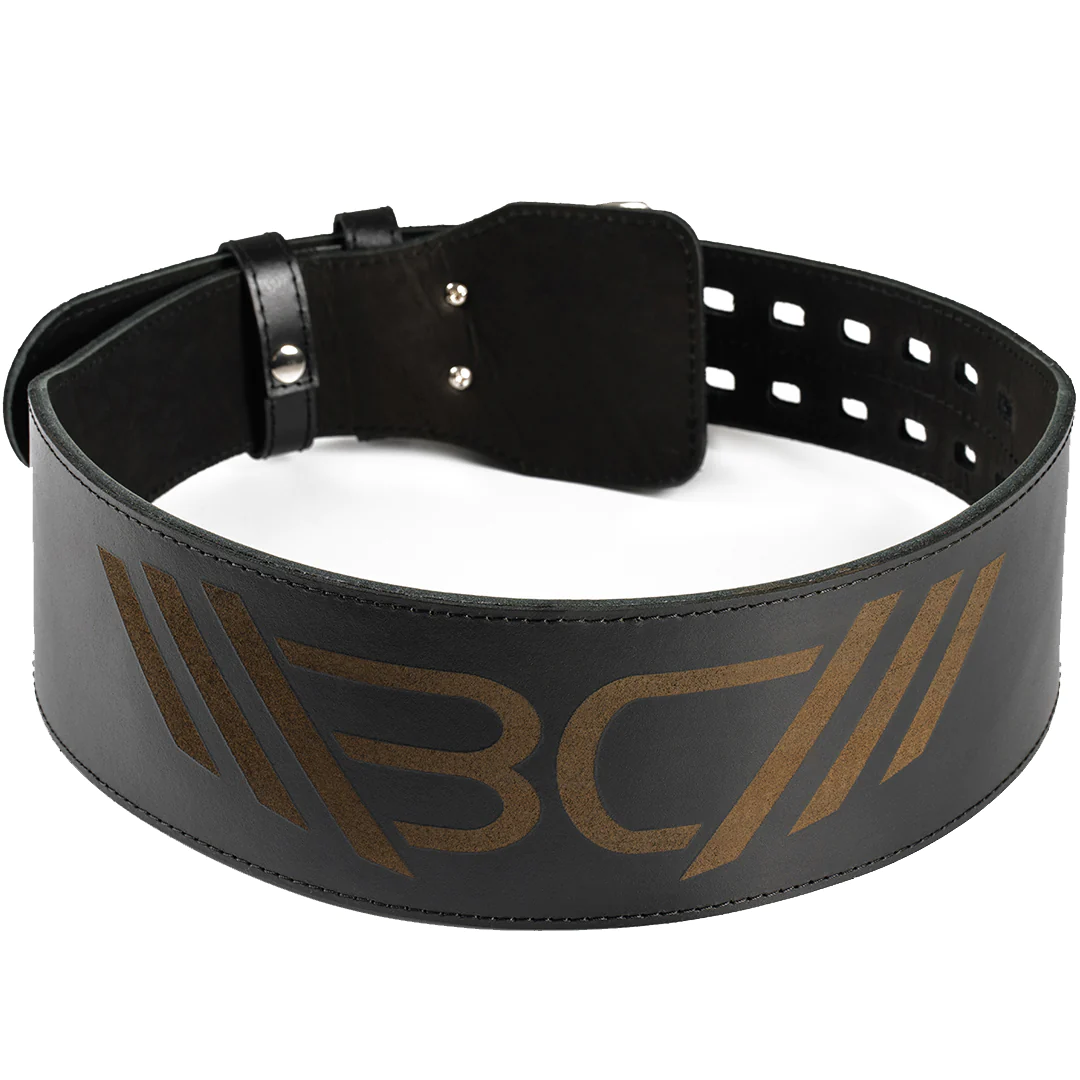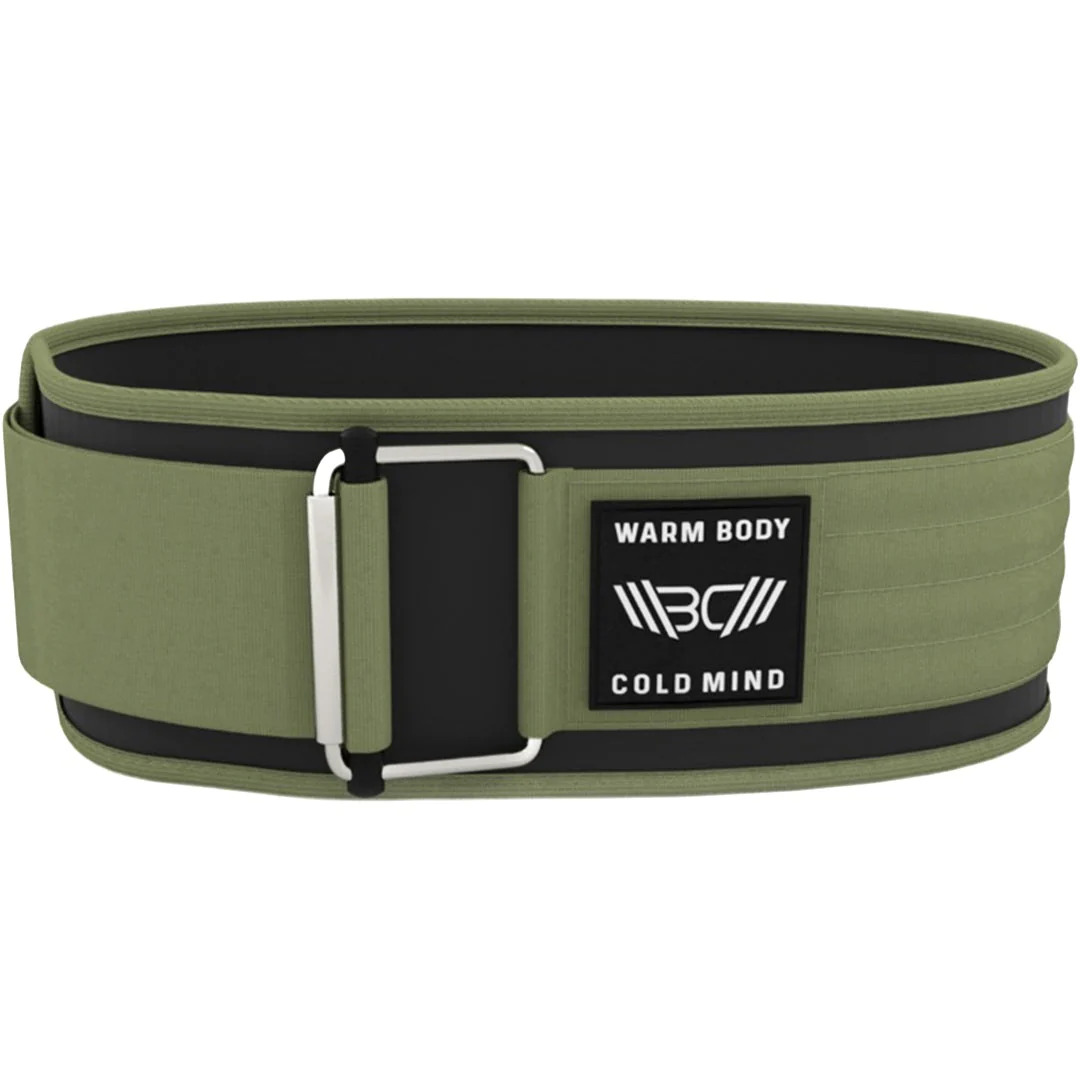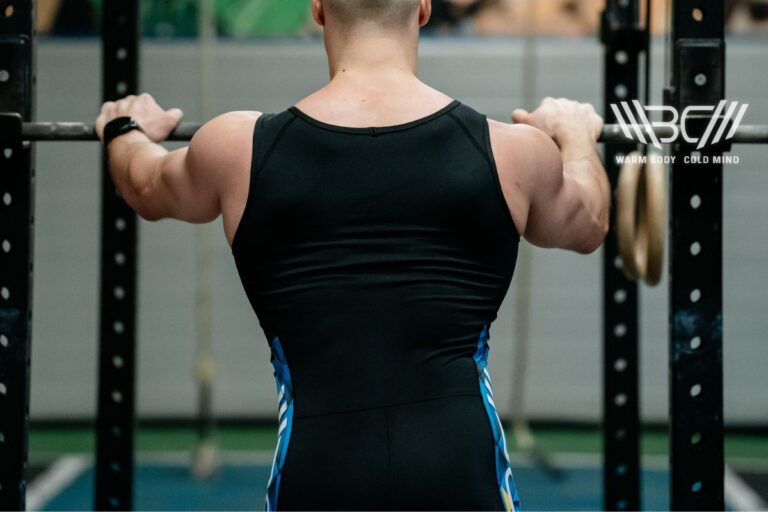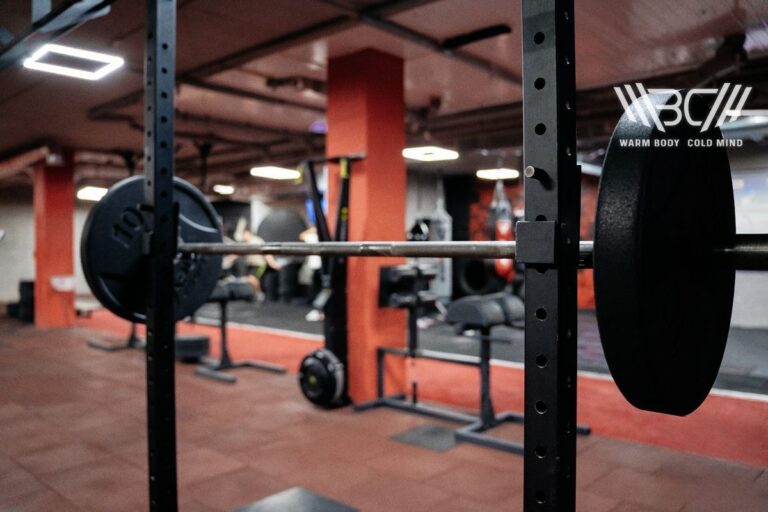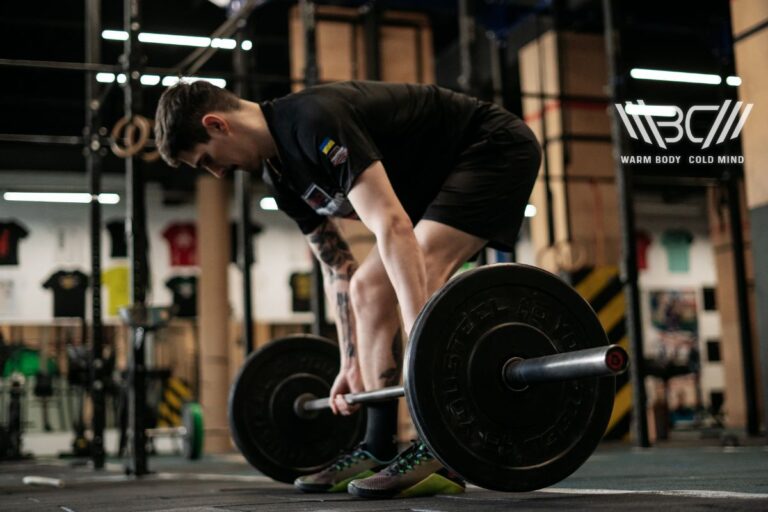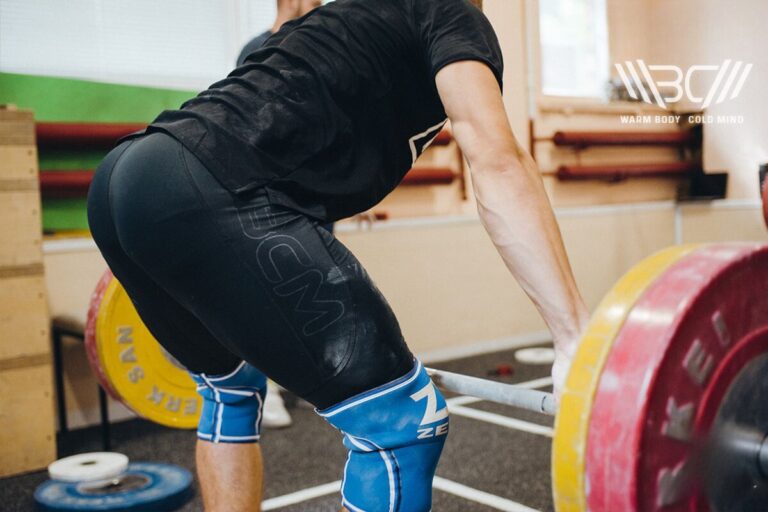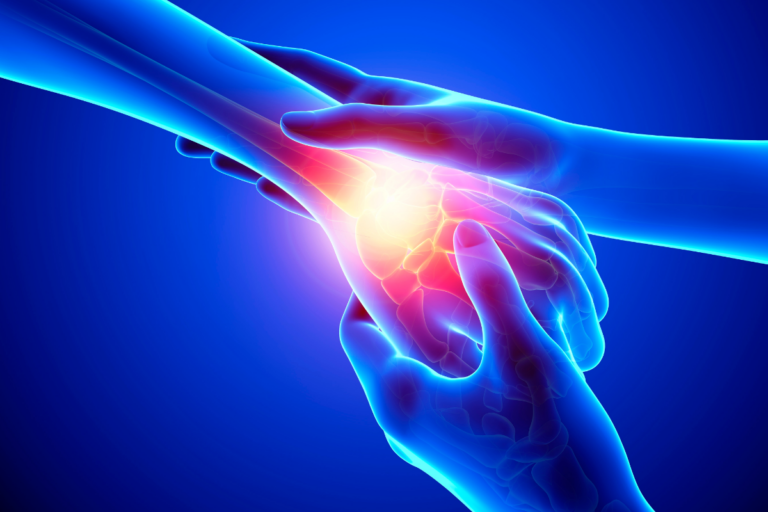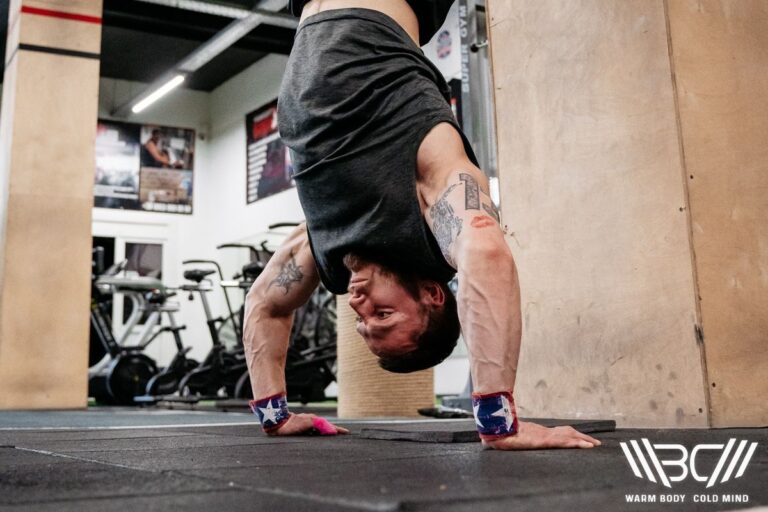5 Best Squat Alternatives for Bad Back
Reviewed by Sergii Putsov
MEDICAL WARNING: This article is for informational purposes only and is not intended to be a substitute for professional medical advice. If you experience any health problems while exercising or using supplements, consult your doctor.
Squats are a fundamental movement pattern, and when loaded they are an excellent exercise for strength and hypertrophy. One thing that can stop you from doing squats is back pain.
During barbell half-squats with 0.8 to 1.6 times bodyweight, the compressive force on the lumbar spine can be as much as 10 times your body weight. Fortunately, there are various squat alternatives for bad back. You can target the same muscles with little to no spinal loading.
What are squat alternatives for bad back? – Front squats are often better tolerated by those who have lower back pain with back squats. Among machine exercises, belt squats are popular. You also have hack squat and leg press machines. Home squat alternatives contain: split squats, jump squats and pistol squats.
Is it Possible to Squat with Back Pain?
The severity and specificity of back pain, and mechanism of injury (if one exists), determines whether you should try doing squats. For example, if your back pain was caused by a severe car accident, squatting is not a good idea initially.
If your back hurts from deadlifting, however, squatting may be a great way to continue building lower body strength without pain. A systematic review of the effects of exercise interventions on chronic non specific low back pain offers useful insights.
First of all, back pain may have various causes and presentations, such as muscle injuries, infections, or disc herniation. Lower back pain doesn’t always originate from the lumbar spine either. Issues with the thoracic spine (mid/upper back), pelvis, and abdomen can also cause lower back pain.
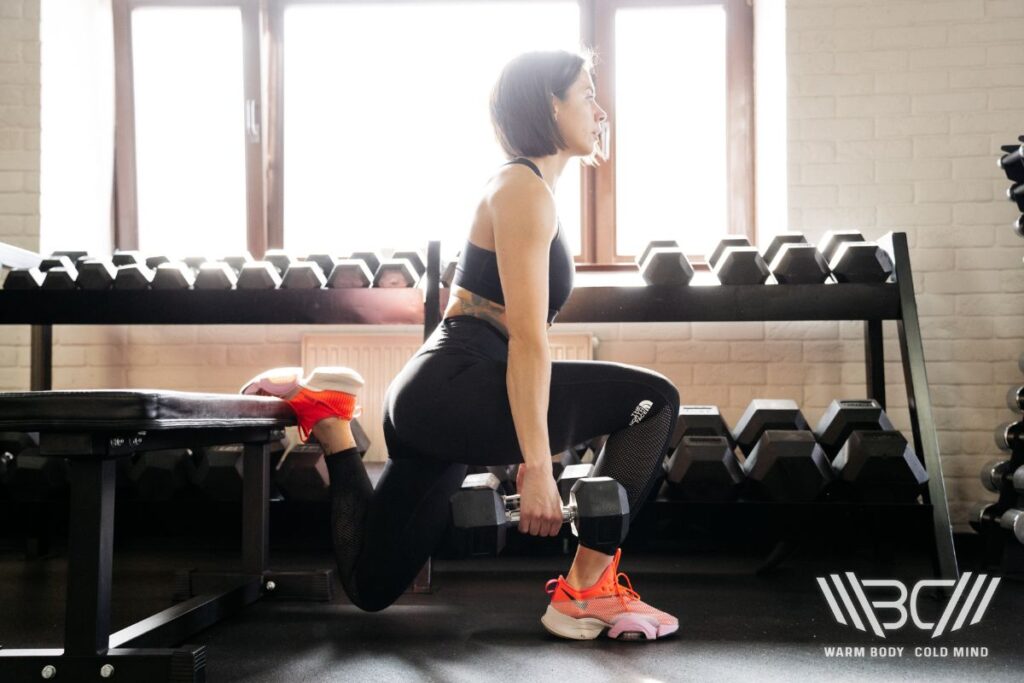
Secondly, there are two categories according to the duration of pain.
- Acute back pain resolves within 6 weeks. Take rest from painful activities, use ice packs and NSAIDs if needed. If the pain is very severe or worsening, head to a health practitioner.
- Chronic back pain is back pain that lasts longer than three months. Experts recommend different exercises to such patients depending on their specific situation. Squatting is a phenomenal workout for your quads, glutes, and groin muscles, and may be part of a rehabilitation program. If it causes back pain, look for alternatives.
This article isn’t meant to offer any medical advice or even programming suggestions. We’re only presenting potential squat substitutes that stimulate the same muscles without putting as much stress on your lower back.
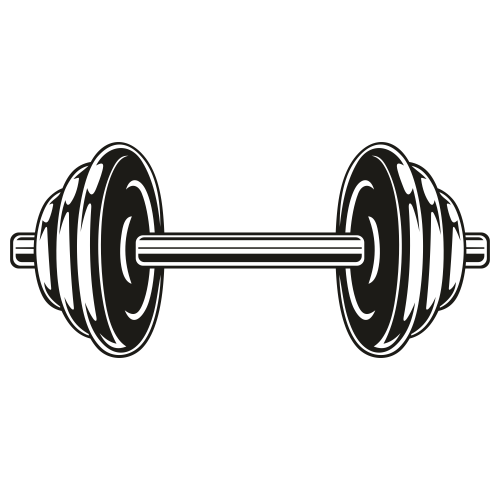
Pro Tip:
5 Squat Alternatives for a Bad Back
Let’s recount such squat alternatives for sciatica, strained muscles, injured tendons or other conditions. Try them after consulting your doctor or therapist.
1. Front squat
This is a lower-body exercise that strengthens your legs and hips, your quads (thigh muscles) and glutes (butt muscles) in particular. The front squat exercise is similar to back squats, however you put the barbell on the front side of your shoulders instead of your upper back.
Such a barbell placement shifts the center of mass forward, which enables to keep the posture more upright. It also involves your quads more than the glutes, making this one of the most effective quad strength and size builders.
- Type: Compound lower-body exercise
- Difficulty Level: Intermediate – Advanced
- Equipment Needed: Barbell
- Muscles Worked: Quadriceps, Glutes
Why is it a good alternative?
Because of the bar placement being in front of the spine, it is much easier to squat with an upright posture during front squats. This allows many individuals to squat without flexing (rounding) their lower back, which is typically what aggravates lower back pain.
How to do it?
Begin the movement with the barbell placed on top of your shoulders just in front of your neck. Put your fingertips under the barbell just outside of your shoulder width and move your elbows up. Keeping your elbows high, bend at your hips and knees to make a squat with your thighs parallel to the ground, or deeper if possible. Straighten your hips and knees to drive up to the initial position.
2. Belt Squat
This variation allows you to keep squatting without any of the external load on your back. The weight hangs from a belt that is wrapped around your waist, making this a perfect squat replacement for a bad back. It lends identical or greater lower-body activation with reduced external spinal loading.
- Type: Compound lower-body Machine Exercise
- Difficulty Level: from Beginner to Advanced
- Equipment Needed: Belt Squat Machine or dip belt with weight on an elevated surface
- Muscles Worked: Quadriceps, Hamstrings, Glutes, Adductors
Why is it a good alternative?
During barbell squats, the weight stays on the top of your back or shoulders, putting a high load through the spine. Belt squats hang the weight directly from your hips to avoid loading the spine.
How to do it?
- If using a belt squat machine: Load up the needed amount of weight plates onto the weight horns, or use the pin to select the appropriate weight. If using a dip belt, load the desired amount of plated or kettlebells onto your belt.
- Stand on the raised platform, put the belt on, stand up with the weight and adjust the height of the machine if needed.
- Inhale, and sit in the squat. Stand up with controlled motion. You can use handles for stabilization.
3. Hack Squat
Did you know that hack squats record the lowest erector spinae involvement in all squat variations? We have its mechanized stability and back support to thank. In terms of spinal loading, it occupies the middle ground between barbell squats and leg presses.
- Type: Compound lower-body Machine Exercise
- Difficulty Level: Intermediate
- Equipment Needed: Hack Squat (2-in-1 Leg Press) Machine
- Muscles Worked: Quadriceps, Hamstrings, Glutes, Adductors
Why is it a good alternative?
You need not stabilize the weight with an unsupported back. As on a leg press machine, you’ll exercise on an angled surface. The railing moves the back pad instead of the footplate.

Pro Tip:
How to do it?
- Assume a shoulder-width stance with feet slightly turned outward (or your regular squat stance). Stand up and disengage the safety bars.
- Squat down as low as possible with back straight and heels on the platform.
- Rise while exhaling and driving your heels into the footrest.

Enhance your strength training with Warm Body Cold Mind leather weightlifting belt providing exceptional support and durability.
WBCM 6mm Leather Belt is excellent for maximum spinal safety. On the contrary, WBCM Nylon 4” Weight Belt blends flexibility with reliable support.

Discover the strength of the Warm Body Cold Mind nylon lifting belt. Lightweight and durable, it provides optimal support for your workouts.
4. Bulgarian Split Squat
Single-leg squats exploit bilateral deficit, meaning you can load each leg more than half the amount of when using both legs. This means a lighter load on the spine for the same/greater amount of load on each leg. These are recommended for people with back and knee complications. However, perfecting the form and movement pattern will take some time.
- Type: Compound lower-body exercise
- Difficulty Level: Intermediate
- Equipment Needed: A Bench, Chair, or Box
- Muscles Worked: Glutes, Quadriceps, Hamstrings, Calves, Core, Adductors
Why is it a good alternative?
Bulgarian split squat is a type of unilateral, and rear-foot elevated exercise, performed with or without external loading. External load can be added with essentially any weight implement, but the typical first choice is dumbbells/kettlebells in your hands.
How to do it?
- Stand ready in front of an elevated, sturdy platform where you can rest one of your feet (shoelace facing down).
- The rear leg balances while the front one supports most of your weight. Squat until your front thigh is roughly parallel to the floor or lower if possible.
- Drive up to the starting position. Add weight (dumbbells) for a greater challenge.
5. Leg Press
A leg press machine paves a fixed, linear, and isolated trajectory. You train the same leg muscles like squats without active spinal stabilization. Belt squats and front squats should be the first squat substitute for a bad back on your list. Since predominantly lower back pain is caused by facet joint and disc injury or irritation.
- Type: Resistance Machine Exercise
- Difficulty Level: from beginner and higher
- Equipment Needed: Leg Press Machine
- Muscles Worked: Quadriceps, Hamstrings, Glutes
Why is it a good alternative?
Leg pressing activates the same lower-body muscles like squats without active core and spinal involvement. You can better challenge your quads without subjecting it to proportionate core stability.
How to do it?
- Sit on the seat pad with your back and head supported. Place your feet in the bottom of the footplate with your similar width to squat stance and bent knees.
- Adjust the seat if necessary, the more you can lean back, the less stress there will be on your lower back due to spinal flexion. Grab the side handles. Start to press the weight away with your legs and feet extended.
- Target full extension without locking knees if you want to avoid full extension. Gradually return to the starting position as if you’re sitting in a squat.
Subscribe!
Get useful tips, expert insights, and in-depth analysis of training programs & nutrition plans to get the most out of your performance.
FAQ
Are Front Squats Safer for the Lower Back?
Front squats are slightly easier on your lower back. The positioning of the barbell in front does compress the spine or tip your torso forward to the extent of back squats. However, your upper back and core role is pivotal in stabilizing the body and transferring the force, which might be a limiting factor.
Can I Do Squats if I Have a Herniated Disc?
Squats, due to a high pressure on the lumbar region, aren’t recommended for people with a herniated disc. In fact, they can exacerbate the injury.
Should I Stop Doing Squats if My Back Hurts?
Yes, in the case of acute lower back injury, resting relevant body parts along with seeking expert assessment and treatment should be the first injury response. Continuing laborious exercises can cause further injury.
Conclusion
Squats, with all their benefits, load the spine significantly and require a high degree of back and hip muscle activity. People with back pain may not be able to tolerate this exercise. But there are other squat alternatives for a bad back like front squats, belt squats, leg press, hack squat, and Bulgarian split squats.
However, don’t neglect to consult a doctor because back pain can be a symptom of many conditions, from minor strains to disc herniation. Hence, exercise type and intensity differ with the gravity of the situation.
What do you think is the leading cause of exercise-induced back pain? Is it incorrect form or ego lifting? Share your thoughts in the comment section below.
References:
- A. Cappozzo, F. Felici, F. Figura, F. Gazzani, “Lumbar Spine Loading during Half-squat Exercises,” Med Sci Sports Exerc 17, no. 5 (1985):613-20.
- Deniz Erdağ, Hasan Ulaş Yavuz, “Evaluation of Muscle Activities During Different Squat Variations Using Electromyography Signals,” In book: 10th International Conference on Theory and Application of Soft Computing, Computing with Words and Perceptions (2019):859-65.
- Hasan Ulas Yavuz, Deniz Erdağ, Arif Mithat Amca, Serdar Aritan, “Kinematic and EMG Activities during Front and Back Squat Variations in Maximum Loads,” Journal of Sports Sciences 33, no. 10 (2015):1058-66.
- Klaus Wirth, Michael Keiner, Hagen Hartmann, Andre Sander, Christoph Mickel, “Effect of 8 Weeks of Free-weight and Machine-based Strength Training on Strength and Power Performance,” J Hum Kinet 53 (2016):201-10.
- Layer Jacob S., Grenz Christylynne, Hinshaw Taylour J., Smith Derek T., Barrett Steven F., Dai Boyi, “Kinetic Analysis of Isometric Back Squats and Isometric Belt Squats,” Journal of Strength and Conditioning Research 32, no. 12 (2018):3301-3309.
- Rebecca Gordon, Saul Bloxham, “A Systematic Review of the Effects of Exercise and Physical Activity on Non-Specific Chronic Low Back Pain,” Healthcare (Basel) 4, no. 2 (2016):22.
- Wiliam Eliassen, Atle Hole Saeterbakken, Roland van den Tillaar, “Comparison of Bilateral and Unilateral Squat Exercises on Barbell Kinematics and Muscle Activation,” Int J Sports Phys Ther 13, no. 5 (2018):871-81.
- All photos are made by WBCM Media team.
Author: David Sasha Schulz
Doctor of Chiropractic, BSc Human Biology, CSCS
Sasha is a Chiropractor and Kinesiologist practicing in Kelowna, BC, Canada. He has been practicing Chiropractic since 2019, integrating manual therapy, strength training and programming principles, and nutritional strategies to get his patients optimal results. He currently scratches the competitive itch in fitness, and the occasional endurance race, and plays golf and snowboards for fun. He has an interest in all strength and fitness-related sports.
Reviewed by: Sergii Putsov
PhD in Sport Science, Olympic weightlifting, Strength & Conditioning coach and fitness expert
Sergii Putsov is a professional weightlifter with over 20 years of experience and multiple national medals. He was a member of the National weightlifting team, competing in the 94 kg weight class. Sergii holds a master’s degree in Olympic & Professional Sport Training and a Ph.D. in Sport Science. After his athletic career, Sergii transitioned into coaching and is now responsible for designing training programs, writing blog articles, providing live commentary for international weightlifting competitions, and hosting sport and fitness seminars worldwide.

